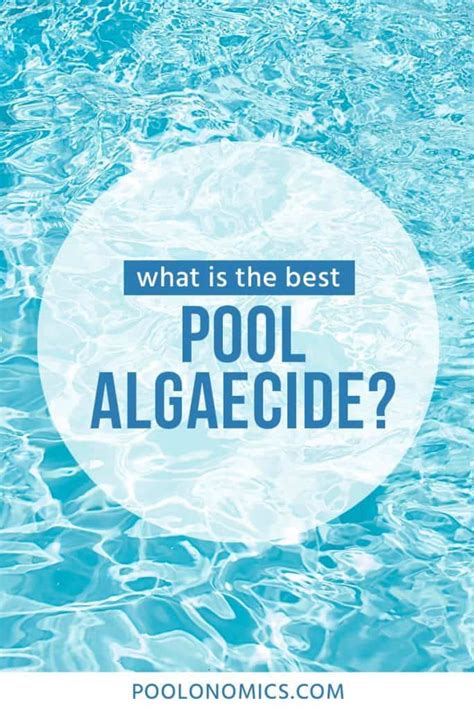Expert Advice: How Much Algaecide for Pool Closure?
Closing your pool for the winter is a crucial step in protecting your investment and ensuring it's ready for the next swimming season. A key component of proper pool closure is using algaecide to prevent algae growth during the off-season. But how much algaecide do you need? Getting this right is vital; too little, and you risk a green pool in spring, while too much can be wasteful and potentially harmful to your pool's surfaces. This guide provides expert advice on determining the correct algaecide amount for your pool closure.
Understanding Your Pool's Needs
Before we dive into dosage, understanding your pool's specific requirements is paramount. Several factors influence the amount of algaecide you'll need:
- Pool Size: This is the most obvious factor. Larger pools naturally require more algaecide than smaller ones.
- Algae History: Has your pool struggled with algae in the past? If so, a slightly higher dose might be necessary as a preventative measure.
- Algaecide Type: Different algaecide types have varying concentrations and effectiveness. Always follow the manufacturer's instructions precisely. Some are copper-based, others non-copper, each with its own application method and dosage recommendations.
- Water Clarity: Starting with clearer water will generally require less algaecide. If your water is already somewhat cloudy, you might need to adjust the amount.
- Climate: Colder climates with longer winters may necessitate a slightly higher dose to combat potential algae growth despite lower temperatures.
How Much Algaecide Should I Use? (Addressing Common Questions)
Let's address some frequently asked questions to clarify the process:
What is the typical algaecide dosage for pool closure?
There isn't a single "typical" dosage. The amount varies dramatically depending on the factors mentioned above. Always refer to the specific instructions on your chosen algaecide product label. This is the most reliable source for accurate dosage information. The label will typically provide instructions based on pool volume, expressed in gallons or liters.
Can I use too much algaecide?
Yes, absolutely. Overdosing algaecide can be detrimental to your pool's surfaces, potentially staining them or causing other damage. It can also impact the balance of your pool's water chemistry upon reopening. Always follow the manufacturer's recommendations meticulously.
What type of algaecide is best for pool closure?
Several algaecides are suitable for pool closure, including copper-based and non-copper options. Copper-based algaecides are effective but can stain some pool surfaces. Non-copper algaecides are generally considered safer for pool finishes. Consider your pool's surface material and your preferences when choosing.
How do I calculate the amount of algaecide needed for my pool?
Most algaecide packaging provides a dosage chart or instructions based on your pool's volume. You'll typically need to measure your pool's volume (length x width x average depth x 7.5 gallons/cubic foot). Then, use the manufacturer's instructions to determine the appropriate amount of algaecide based on your pool's volume.
What should I do if I accidentally overdose on algaecide?
If you suspect an overdose, immediately contact a pool professional for guidance. They can assess the situation and recommend appropriate steps to mitigate potential damage.
Beyond the Dosage: Essential Steps for Pool Closure
Using the correct amount of algaecide is only one part of successful pool closure. Here are other crucial steps:
- Proper Water Chemistry: Before adding algaecide, ensure your pool's water chemistry is balanced (pH, alkalinity, calcium hardness).
- Cleaning: Thoroughly clean your pool, removing all debris and leaves.
- Winterizing Equipment: Properly winterize your pump, filter, and other equipment.
- Covering: Use a suitable pool cover to protect your pool from debris and weather.
By following these steps and consulting your algaecide's instructions carefully, you can ensure your pool is properly protected during the off-season, ready for sparkling enjoyment when the warm weather returns. Remember, consulting a pool professional for personalized advice based on your specific pool and circumstances is always a good idea.

